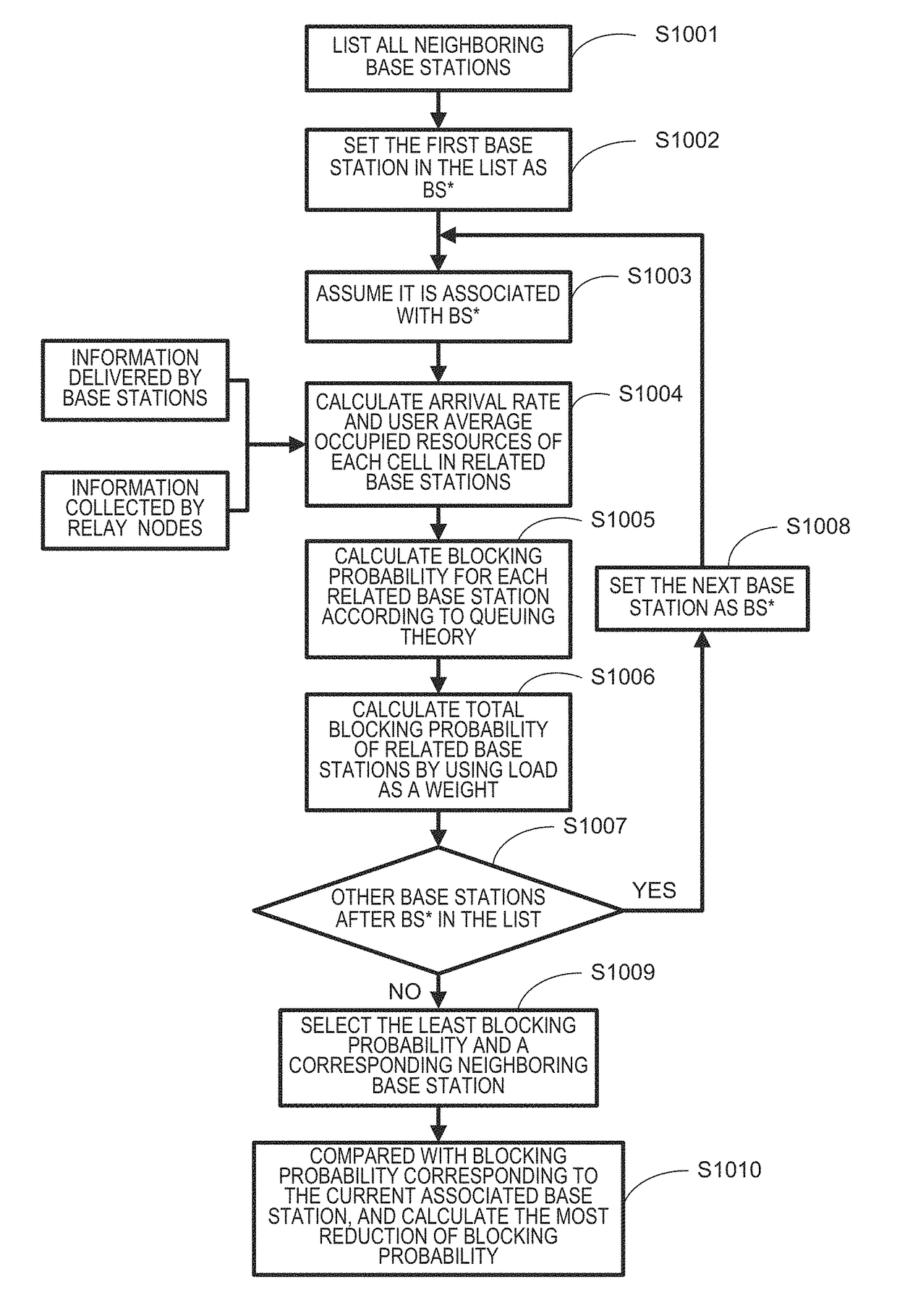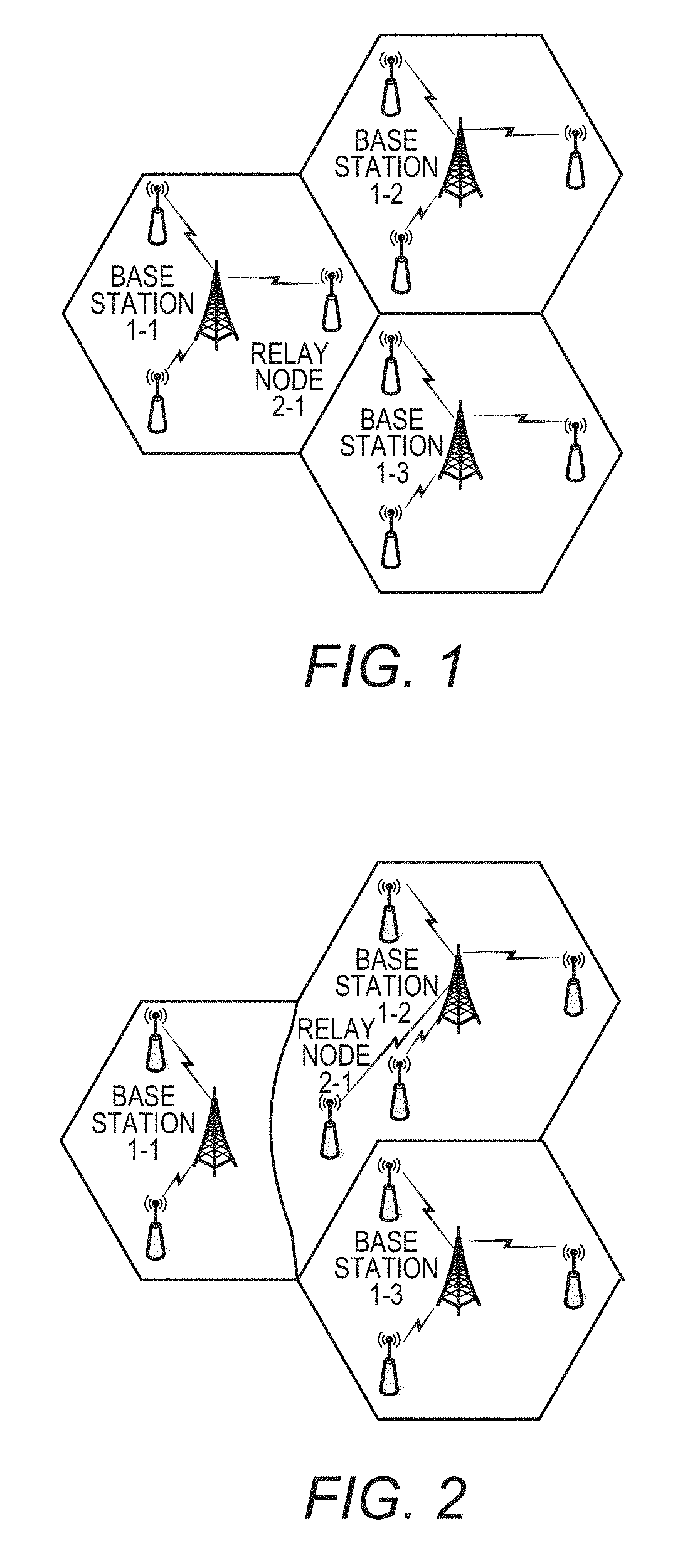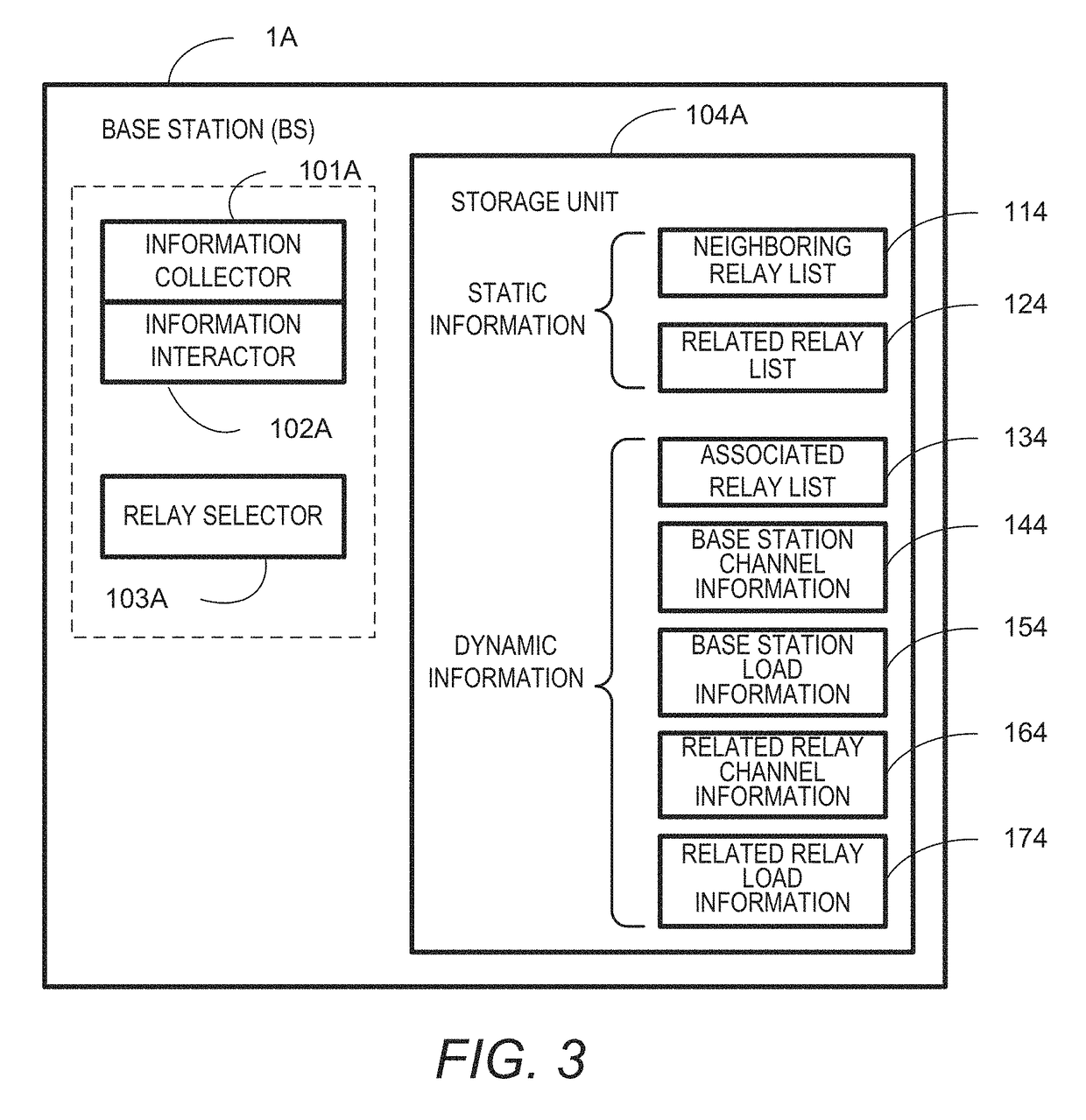Wireless communication system and method, and dynamic association control apparatus and method
a communication system and wireless technology, applied in electrical equipment, radio transmission, network traffic/resource management, etc., can solve the problems of affecting the quality of service (qos) of users in hot cells, the inability to fully utilize resources in non-hot cells, and the dramatic variation of cell load in time domain and space domain, so as to achieve balanced load, save frequency resources, and reduce blocking probability.
- Summary
- Abstract
- Description
- Claims
- Application Information
AI Technical Summary
Benefits of technology
Problems solved by technology
Method used
Image
Examples
first embodiment
[0047]Assume that a wireless communication system in a first embodiment includes a plurality of base station 1A and a plurality of relay nodes 2A 1B associated with the plurality of base stations. Each base station 1A has the same internal structure, and each relay node 2A 1B also has the same internal structure.
[0048]FIG. 3 is a block diagram of an internal configuration of a base station 1A in a wireless communication system according to the first embodiment. As illustrated in FIG. 3, the base station 1A includes an information collector 101A, an information interactor 102A, a relay selector 103A, and a storage unit 104A.
[0049]The information collector 101A is configured to collect channel information and load information of the base station 1A, and store the information into the storage unit 104A. The information interactor 102A is configured to interact information with the relay node to deliver an information message and an instruction message.
[0050]The relay selector 103A is a...
other modified embodiment
[0110]In the first embodiment, as illustrated in FIG. 12, when the relay node sends the most reduction of blocking probability to all the related base stations, each of the base stations may select the largest one from the received reductions of blocking probability, and reply the corresponding relay node with acknowledgement information.
[0111]However, in the practical system, since certain errors exist in collection of the information, the calculation of blocking probability is somewhat deviated from the practical blocking probability. Therefore, specifically in a case where the reduction of blocking probability is relatively small, such deviation may result in a decision that the association between the base station and the relay node is mistakenly changed in the original solution. On the other hand, the changing of the association between the relay node and the base station also needs to pay a certain cost, including a switching delay or the like. In a case where the decision of ...
second embodiment
[0120]The first embodiment is characterized in that calculating the blocking probability and determining a relay node which performs association transfer or a base station to which the association is transferred is done in a relay node.
[0121]However, in the practical system, as compared with the base station, the processing and calculation capabilities of the relay node are limited. Therefore, calculating the blocking probability in the relay node may bring heavy burden to the relay node, and it needs to consider transferring the calculation of the blocking probability to the associated base station of the relay node.
[0122]The second embodiment is carried out based on the above consideration, and as compared with the technical solution of the first embodiment, the difference lies in that the base station has a part capable of calculating the blocking probability. For this modification, information related to the blocking probability and originally stored in the relay node needs to b...
PUM
 Login to View More
Login to View More Abstract
Description
Claims
Application Information
 Login to View More
Login to View More - R&D
- Intellectual Property
- Life Sciences
- Materials
- Tech Scout
- Unparalleled Data Quality
- Higher Quality Content
- 60% Fewer Hallucinations
Browse by: Latest US Patents, China's latest patents, Technical Efficacy Thesaurus, Application Domain, Technology Topic, Popular Technical Reports.
© 2025 PatSnap. All rights reserved.Legal|Privacy policy|Modern Slavery Act Transparency Statement|Sitemap|About US| Contact US: help@patsnap.com



